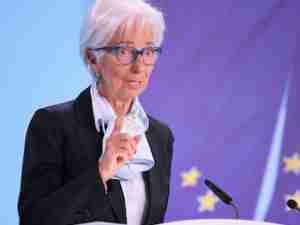China’s manufacturing, services sectors diverge in February
By: Reuters | Mar 03 2014 at 03:25 PM | International Trade
Data for the world's second-largest economy has been mixed, and the Lunar New Year holidays have made it harder to assess momentum. Weak investment and declining manufacturing PMI readings have been countered by surprisingly buoyant exports and bank lending.
The official non-manufacturing Purchasing Managers' Index (PMI) rose to a three-month high of 55.0 in February, while the final Markit/HSBC manufacturing Purchasing Managers' Index fell to 48.5, its third straight decline.
That followed an official manufacturing PMI on Saturday which fell to an eight-month low of 50.2, just above the 50 level that separates contraction from expansion.
"It's a domestic investment-led slowdown. You see exports strong, so external demand is fine," said Wei Yao, China economist at Societe Generale in Hong Kong.
"If the services PMI is to be believed, the service sector is not doing so bad, but ... the manufacturing, or the investment-heavy sector, not as well."
In recent weeks, investors have been concerned the Chinese and U.S. factory sectors are dragging on global activity, even as European manufacturers enjoyed a solid start to the year.
A services PMI by Markit Economics and HSBC will be released on Wednesday. The Markit/HSBC PMIs cover more smaller, private firms than the official PMIs, which include more large and state-owned firms.
SEASONAL IMPACTS
Although both sets of PMIs are seasonally adjusted, the variable timing of the lengthy Chinese New year holidays makes it hard to smooth out all distortions. While manufacturers close for the holidays, the services industry moves into high gear.
Rather than its normal data reports, the statistics bureau will release combined January-February figures for factory output, fixed-asset investment and retail sales later this month.
As a long-term goal, the government has been trying to reduce the economy's dependence on exports and enhance the role of domestic consumption, but it is unclear how much growth it might be willing to sacrifice to reach that goal.
"We are seeing a higher share of services in GDP, and we cite that sometimes as one of the signs of rebalancing in the economy," said Stephen Schwartz, Chief Economist for Asia at BBVA in Hong Kong.
"If that's part of a longer-term trend, that's somewhat encouraging."
Services contributed 45 percent of gross domestic output in 2012, having overtaken manufacturing as China's biggest employer in 2011. It has weathered the global slowdown much better than the factory sector.
In 2013 China's economy grew 7.7 percent, steady from the previous year, just ahead of the official target of 7.5 percent, which would have been the slowest growth since 1999.
Some analysts have said weak PMI numbers would encourage the government to loosen monetary policy to keep the economy growing at 7.5 percent, which government economists have said could again be the official target again this year.

